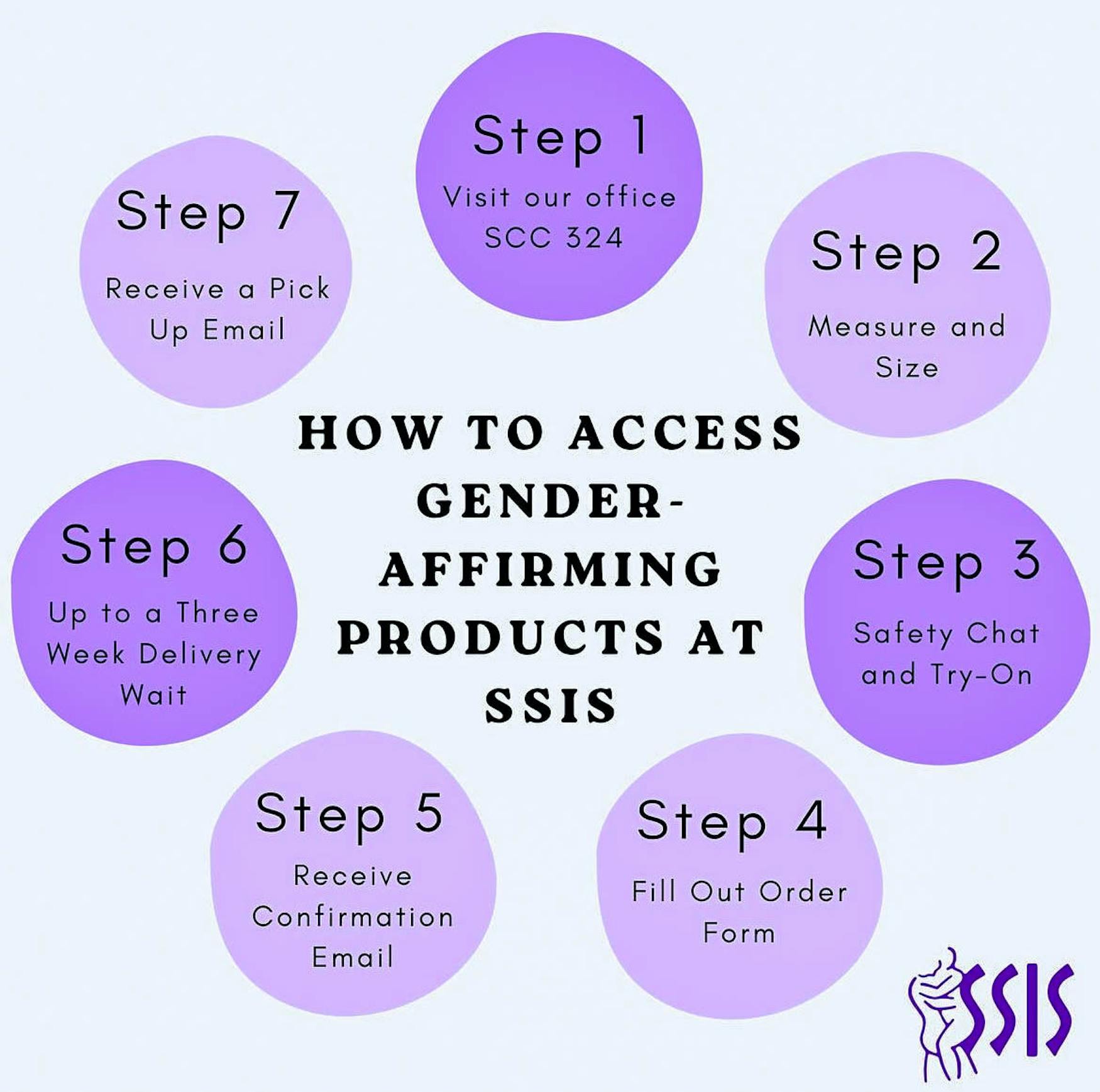Brandeis Student Sexuality Information Service offers new services to students
On Sept. 13 Brandeis’ Student Sexuality Information Service announced the arrival of new gender-affirming products.
On Friday, Sept. 13 the Student Sexuality Information Service announced on their Instagram the arrival of new gender-affirming products, expanding their presence on campus. Previously, the only other organization on campus that offered gender affirming products was Brandeis Gender and Sexuality Center, with a gender affirming clothing closet and dressing room. Individuals are encouraged to “drop off clean and gently used or new clothing to a GSC staff member” according to the GSC website. Nonetheless, the new SSIS offerings are a welcomed expansion to gender-affirming products on the Brandeis campus.
Gender-affirming products, according to SSIS and the Trans Wellness Initiative, are any piece of clothing, garment or gear that helps individuals feel more confident and comfortable in their own body and “explore their gender presentation on their own terms.”
Gender-affirming care is vital to those who identify with a different gender than that which they were assigned at birth. Studies conducted by the Office of Population Affairs found that gender-affirming care is a “supportive form of healthcare” that comprises many services including “medical, surgical, mental health and non-medical services.” Currently, out of these categories, SSIS offers only non-medical services. Research from the Office of Population Affair shows that gender-affirming care “improves the mental health and overall well-being” of individuals that are trans or gender nonconforming.
SSIS as described by GSC is a student-led organization whose mission is to “decrease sexual stigma” at the University as well as support the sexual health and wellness needs of Brandeis students. Operating since 1973, SSIS is a confidential and non-judgemental space where students can receive peer support, education on sexuality, access subsidized sexual health and wellness products as well as resource and product referrals.
SSIS now offers Spectrum Binders ranging from sizes XXS-7XL and in 16 colors, as well as a TransTape starter pack. The TransTape starter pack includes one roll of TransTape offered in four skin tones and three sizes, four ounces of Jojoba Removal Oil, a small repairing salve and one 10 pack of nipple guards. The way chest binding works is by flattening breasts “by spreading them evenly and compressing the tissue” according to SSIS.
In their Instagram post, SSIS gives possible reasons for chest binding. Reasons for chest-binding can include gender dysphoria, defined by the Mayo Clinic as the “feeling of discomfort or distress that might occur in people whose gender identity differs from their sex assigned at birth or sex-related physical characteristics,” gender euphoria or “simply wanting to look different in clothing.”
SSIS also dedicated several Instagram slides to best practices of binding safely. Wearing a binder for longer than eight hours at a time or going to sleep in a binder can cause rib cage damage and should be avoided. They note that ribcage damage can result in complications for those seeking top surgery. Binding while exercising can impede breathing and movement; thus, it is recommended to size up or use alternative methods of binding if you plan to bind while exercising. Additionally, wearing more than one binder at a time, or any additional compression garment, will only damage the user’s ribcage, not create a flatter or more effective binding result. Finally, SSIS recommends stretching after binding as it can help release muscle pain.
As of Sept. 3, SSIS also started offering TransTape, an adhesive that can be used to “flatten and shape” one's chest. TransTape provides similar results to a binder but “can give a more masculine/androgynous chest appearance.” SSIS addresses the benefits and drawbacks of using TransTape. The tape, unlike a binder, can be worn for multiple days at a time, can get wet, does not completely flatten the chest from compression, is easier to customize and is less visible than a binder under clothing. However, the adhesive from the tape may be irritating to one’s skin as well as possibly being “less effective for flattening larger chests.” TransTape is also not reusable, whereas a binder is.
For best practices using TransTape SSIS recommends to do a test strip of the tape first before using as some people can be severely irritated by or allergic to the tape’s adhesive. They also advise people to wear a “bandage or a nipple cover under TransTape” as to protect the sensitive skin from the adhesive, to “avoid applying over broken skin” to ensure that normal breathing after application and to remove the tape with oil slowly as to “avoid skin damage and tearing.”
On Sept. 15, SSIS posted on Instagram detailing how to access the new gender affirming products in several steps. The first step is to visit the SSIS office in Shapiro Campus Center room 334. Next, individuals will meet with a SSIS member to discuss their needs and then be presented with a choice of either a binder or TransTape. From there the individual will receive safety information on their chosen binding method and try on the products for sizing purposes. After trying on the product an interested party would fill out an order form through SSIS, receive a confirmation email from the SSIS Financial Coordinator, wait up to three weeks for delivery and receive an email to pick up the ordered product from the SSIS office.



Please note All comments are eligible for publication in The Justice.